Preface
Astronomy is one of the most dynamic and exciting areas of modern science. Its recent discoveries often capture widespread interest, and its subjects—the planets, stars, and the universe—inspire awe and inquiry. From observations of previously unseen worlds in the outer depths of our solar system to new evidence of how the most massive stars can collapse into black holes, astronomy provides a wide array of opportunities to show students the continuing process of science.
With so many possible concepts to explore, students can easily get overwhelmed. Universe has been developed to help students focus on and learn core concepts. Through clear, highlighted explanations of key topics, and multiple interactions with material, the text fosters an appreciative comprehension of the subject.
Cosmic Conections: figures summarize key ideas visually
Many students learn more through visual presentations than from reading long passages of text. To help these students, large figures, called Cosmic Connections, appear in most chapters of Universe. Cosmic Connections give an overview or summary of a particular important topic in a chapter. Subjects range from the variety of modern telescopes to the formation of the solar system; from the scale of distances in the universe to the life cycles of stars; and from the influence of gravitational tidal forces to the evolution of the universe after the Big Bang. Cosmic Connections convey the sense of excitement and adventure that lead students to study astronomy in the first place.
Enhanced, animated versions of the Cosmic Connections are available within the textbook’s associated multimedia resources.
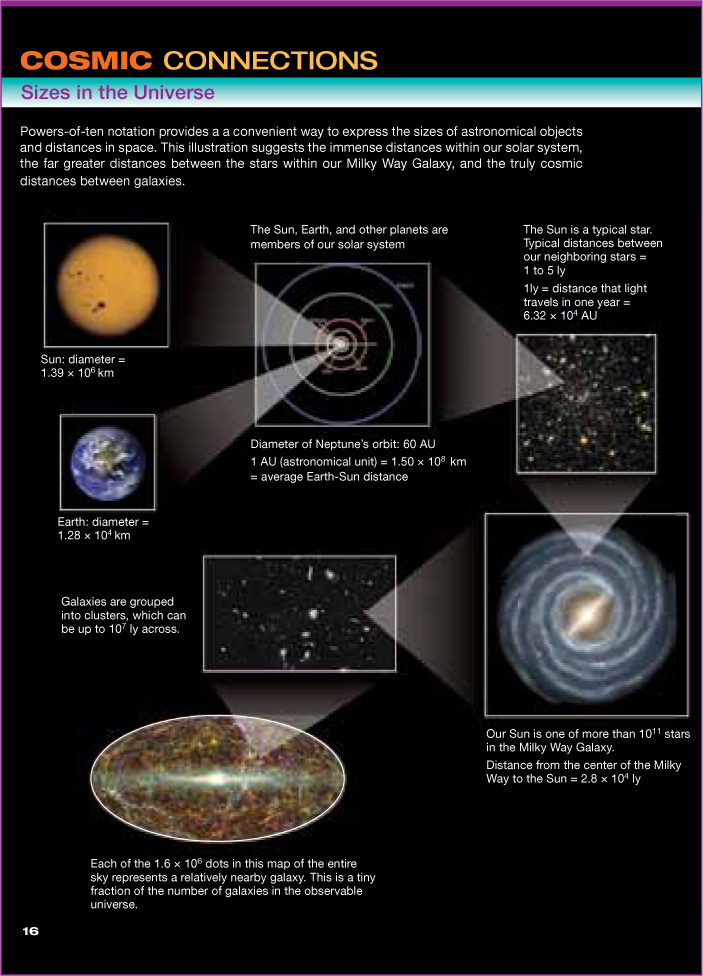
New! Conceptcheck and Calculationcheck Questions: allow students to go beyond passive reading
Included at the end of each section, thought-provoking ConceptCheck questions provide immediate assessment by going beyond reading comprehension, often asking students to draw conclusions informed by the text, calling for applied thinking and synthesis of concepts.
Similar to ConceptCheck questions and focusing on mathematics, CalculationCheck questions give students the opportunity to test themselves by solving different mathematical problems associated with the chapter conceps. They appear only within sections where relevant mathematical reasoning is present. Answers to all ConceptCheck and CalculationCheck questions are provided at the back of the book.
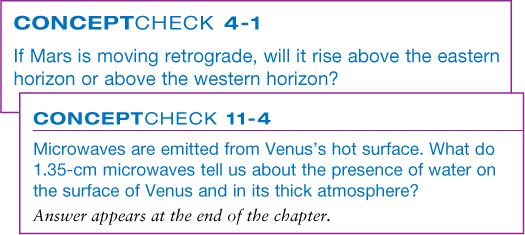
xviii

Motivation Statements: connect detailed discussion to the broader picture
As students read a science text, they often wonder “What is the key idea? How does it relate to the discussion on previous pages? What motivated scientists to make these observations and deductions?” Free-standing Motivation Statements address these questions. These brief sentences show students how a section’s material fits in with the larger picture of astronomy presented in the chapter. Some statements explore the scientific method. Others compare topics in one section with those in another section or chapter; still other statements give a quick summary of a section’s conclusion.
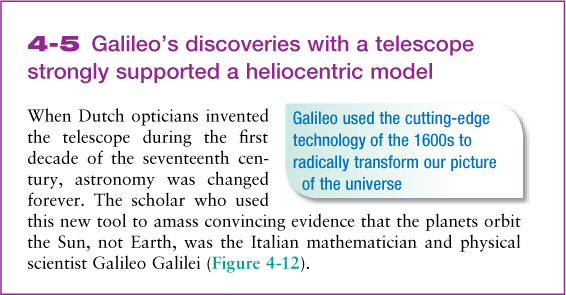
Cautions: confront misconceptions
Many people think that Earth is closer to the Sun in summer than in winter and that the phases of the Moon are caused by Earth’s shadow falling on the Moon. However, these “common sense” ideas are incorrect (as explained in Chapters 2 and 3). Throughout Universe, paragraphs marked by the Caution icon alert the reader to such common conceptual pitfalls.

Analogies: make astronomy relatable to students
When learning new astronomical ideas, it can be helpful to relate them to more familiar experiences on Earth. Throughout Universe, Analogy paragraphs make these connections. For example, the motions of the planets can be related to children on a merry-go-round, and the bending of light through a telescope lens is similar to the path of a car driving from firm ground onto sand.


Explanatory ART: helps students visualize concepts
Many figures in the text utilize balloon captions to help students interpret complex figures. Select photos also contain brief labels that point out the most important relevant features.
xix
New! Fold-Out Photos: highlight some of astronomy’s most majestic sights
Throughout the text are special gatefold photo spreads, which take advantage of extra space to highlight awe-inspiring astronomy photography in full detail.


Wavelength Tabs: astronomers observe the sky in many forms of light
Astronomers rely on telescopes that are sensitive to nonvisible forms of light. To help students appreciate these different kinds of observation, all of the photos in Universe appear with wavelength tabs. The highlighted letter on each tab indicates whether the image was made with Radio waves, Infrared radiation, Visible light, Ultraviolet light, X-rays, or Gamma rays.
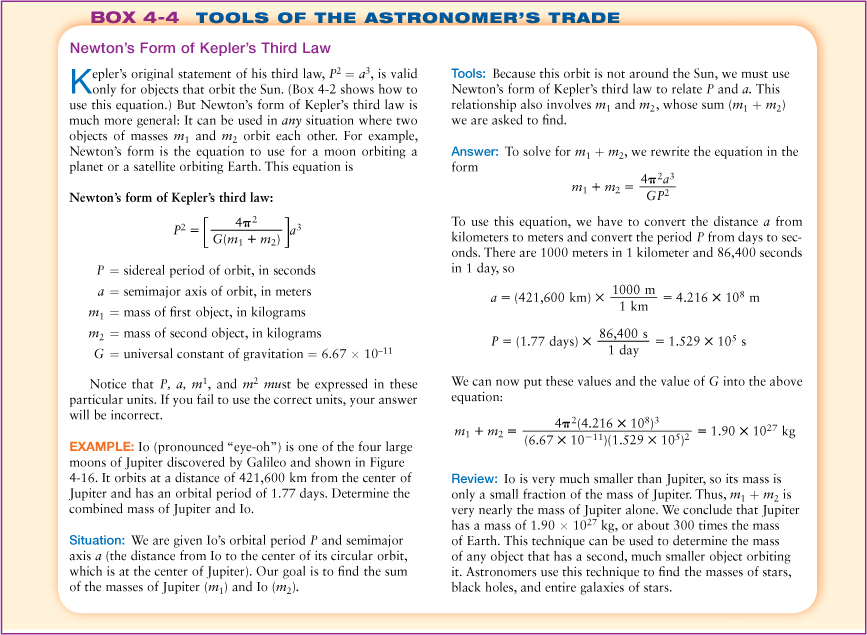
Tools of The Astronomer’S Trade and S.T.A.R.: a problem-solving rubric
All the worked examples in Universe (found in boxes called Tools of the Astronomer’s Trade) follow a logical and consistent sequence of steps called S.T.A.R.: assess the Situation, select the Tools, find the Answer, and Review the answer and explore its significance. Feedback from instructors indicates that when students follow these steps in their own work, they more rapidly develop important problem-solving skills.
xx
Astronomy Down to Earth: reveals the universal applicability of the laws of nature
Astronomy Down to Earth boxes illustrate how the same principles astronomers use to explain celestial phenomena can also explain everyday behavior here on Earth, from the color of the sky to why diet soft drink cans float in water.
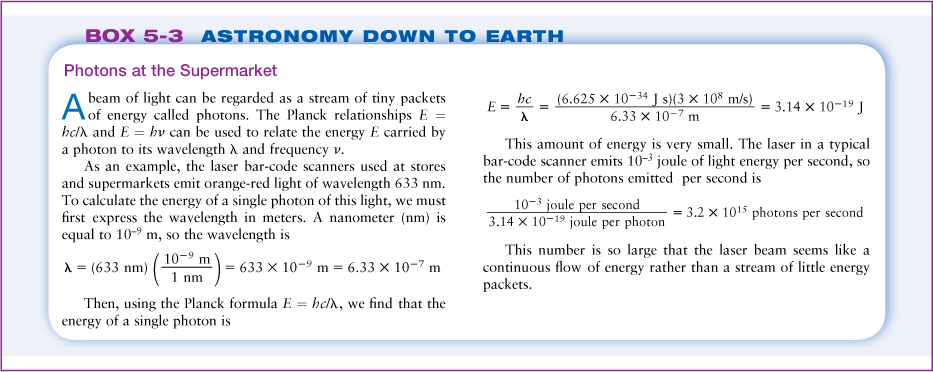
Up-to-date information shows the cutting edge of astronomy
Universe is up to date with the latest astronomical discoveries, ideas, and images. These include:
- New information on the formation of solar system (Chapter 8)
- Kepler’s discoveries of extrasolar planets (Chapter 8)
- The best evidence from Curiosity for the long-term flow of water on Mars (Chapter 11)
- Water geysers revealing a large subsurface ocean on Enceladus (Chapter 13)
- Cryovolcanism on Titan (Chapter 13)
- The history-making 2013 asteroid impact in Russia (Chapter 15)
- Dawn’s exploration of the asteroid Vesta (Chapter 15)
- New models of supernovae explosions (Chapter 20)
- Gamma-ray bubbles in the Milky Way (Chapter 22)
- Discovery of the Higgs particles (Chapter 26)
- Microtunnels found in a Martian meteorite consistent with microbial origins (Chapter 27)

Energy, Stellar Remnant Cores, and Active Galactic Nuclei
Energy is developed as an overarching concept in astronomy and is introduced in Chapter 4, Gravitation and the Waltz of the Planets. Our treatment begins with an understanding of kinetic and gravitational potential energy, aided by figures and ConceptCheck questions. Then, energy is considered with gravitational systems and provides an intuitive basis for a variety of orbital properties. In Chapter 5, The Nature of Light, we develop the connection between temperature and thermal energy, as well as the energy of light. With these powerful concepts, energy is considered throughout the text wherever it is the most natural description of phenomena.

xxi
Discussions of white dwarfs and neutron stars are combined into Chapter 20, Stellar Evolution: The Deaths of Stars. As the only two possible stellar remnant cores, these objects complement each other physically and pedagogically. The depth of treatment on neutron stars is reduced as part of this approach, and the full original chapter, Neutron Stars, is available online.
Chapter 24, Quasars and Active Galaxies, has been significantly revised. The historical development of this field is followed when that leads to the clearest explanation of the topic, and when the history itself is confusing, we continue the treatment with our modern understanding of active galaxies. The revised chapter avoids many of the complicated historical names originally given to objects that are now simply referred to as active galaxies. With these changes, the reader can more easily understand and enjoy these intriguing objects.

Planetary Themes: Comparative Planetology and Systems Approach
The two chapters on comparative planetology—Chapter 7, Our Solar System, and Chapter 8, The Origin of the Solar System—have been revised and updated with the latest information. They contain explanations of the official distinctions between planets and dwarf planets, as well as discussions of new discoveries about objects in our own solar system. Mercury, Venus, and Mars are covered in a single chapter on the terrestrial planets, Chapter 11, to emphasize their similarities to Earth and to one another. Figures elucidating comparative planetology appear throughout the planetary coverage. In addition to its comparative planetology theme, Universe takes a unique systems approach to planetary surfaces and atmospheres: each planet’s surface and atmosphere are discussed in tandem, where other texts address them separately. This underscores their interrelationships and builds a deeper understanding of the planets’ overall characteristics.
End-of-chapter material provides students with opportunities to review and assess what they have learned and opportunities to extend their knowledge
Key Words
A list of Key Words appears at the end of each chapter, along with the number of the page where each term is introduced.
Key Ideas
Students can get the most benefit from these brief chapter summaries by using them in conjunction with the notes they take while reading.

Questions
Items from these sections are designed to be assigned as homework or used as jumping-off points for class discussion. Some questions ask students to analyze images in the text or evaluate how the mass media portray concepts in astronomy. Advanced questions are accompanied by a Problem-Solving Tips and Tools box to provide guidance. Web/e-Book questions challenge students to work with animations and interactive modules on the Universe Web site or e-Book (described below) or to research topics on the World Wide Web. Near the end of the book is a section of Answers to Selected Questions.
xxii
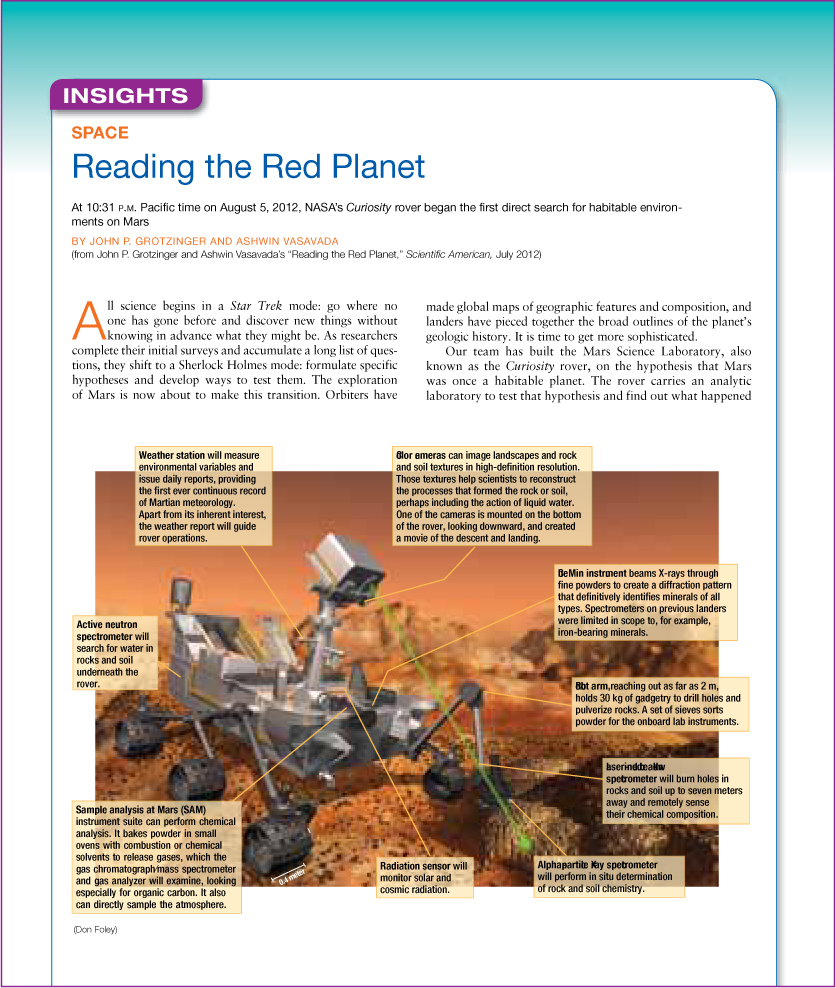
Scientific American Articles
Chosen by the textbook authors to illuminate core concepts in the text, these brief, relevant selections demonstrate the process of science and discovery. Revealing recent developments related to specific topics in the text, the articles also provide touchstones for classroom discussion.
Guest Essays
Several chapters in Universe end with essays written by scientists involved with some of the recent discoveries described in the text. These include essays by Scott Sheppard on Pluto and the Kuiper belt and Kevin Plaxco on astrobiology. For a full list of essays, see the Contents Overview on pages ix–x.
A revised selection of Observing Projects
The download code that comes free (bundled upon request) with this text grants 18 months of access to the Starry NightTM planetarium software from Simulation Curriculum Corp. Every chapter of Universe includes one or more Observing Projects that use this software package. Many projects are accompanied by an Observing Tips and Tools box to provide help and guidance.
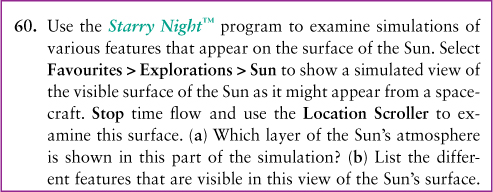
Three versions of the text meet the needs of different instructors
In addition to the complete 27-chapter version of Universe, two shorter versions are also available. Universe: The Solar System includes Chapters 1–16 and 27; it omits the chapters on stars, stellar evolution, galaxies, and cosmology. Universe: Stars and Galaxies includes Chapters 1–8 and 16–27; it omits the detailed chapters on the solar system but includes the overview of the solar system in Chapters 7 and 8.
xxiii